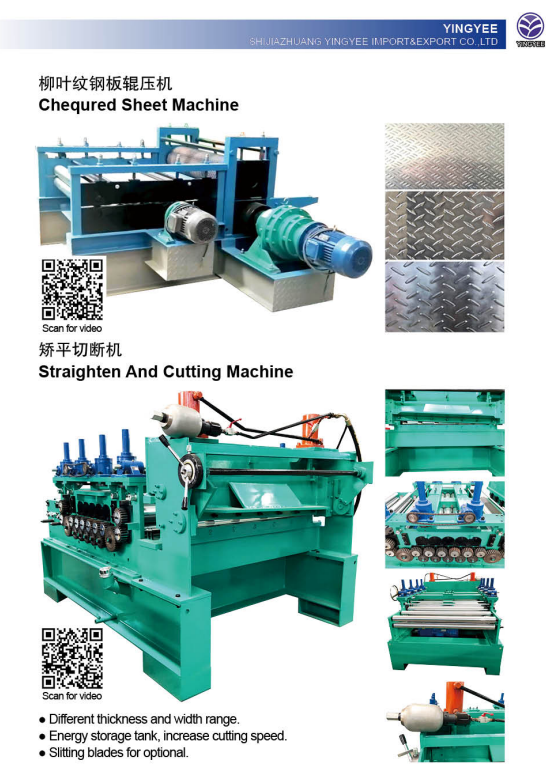
The Evolution and Significance of Cable Tray Manufacturing Machines
Cable tray manufacturing machines play a crucial role in the production of cable management solutions that are essential for various electrical and construction applications. As infrastructure projects grow in complexity, the demand for efficient and reliable cable management systems has surged. The evolution of cable tray manufacturing machines has significantly contributed to meeting this demand, combining innovative technology with advanced manufacturing processes.
Understanding Cable Trays
Cable trays are structural platforms used to support insulated electric wires and cables. They provide a safe and organized way to manage electrical distribution in commercial and industrial settings. Their design allows for adequate ventilation and reduces the risk of cable overheating, while also simplifying maintenance and future modifications. Cable trays come in various materials, including steel, aluminum, and fiberglass, each chosen based on specific environmental conditions and load requirements.
The Role of Manufacturing Machines
The machinery involved in producing cable trays encompasses a range of specialized equipment designed for cutting, bending, welding, and finishing. Modern cable tray manufacturing machines enhance productivity, reduce labor costs, and ensure high precision in the final products.
1. Cutting Machines These machines are essential for sizing raw materials accurately. They utilize advanced cutting technologies, such as laser or plasma cutting, providing clean edges and minimal waste.
2. Bending Machines After cutting, the metal sheets are bent into specific shapes needed for the trays. CNC (Computer Numerical Control) bending machines are popular for their ability to achieve precise angles and repetitive operations, ensuring uniformity across products.
3. Welding Machines The components of cable trays must be securely joined. Robotic welding machines deliver consistent weld quality at high speed, allowing for more complex designs while maintaining structural integrity.

4. Finishing Equipment After assembly, cable trays require surface treatment to prevent corrosion and enhance durability. Powder coating and galvanizing are commonly used processes that protect the trays from environmental damage, extending their lifespan.
Innovations in Cable Tray Manufacturing
The landscape of cable tray manufacturing is continuously evolving, driven by technological advancements. Automation and smart manufacturing practices are at the forefront of this evolution.
1. Automation Industry 4.0 technologies are increasingly integrated into the production line, allowing for real-time monitoring and data collection. Automated systems can optimize workflows, predict maintenance needs, and enhance overall efficiency.
2. Sustainability As industries move towards greener practices, cable tray manufacturers are adopting more sustainable materials and production processes. Recyclable materials and environmentally-friendly coatings are becoming standard in production, reflecting a commitment to reducing the ecological footprint.
3. Customization Customers today demand tailored solutions that fit their specific needs. Manufacturers are responding by leveraging advanced design software that allows for custom designs and smaller production runs, adapting quickly to changing market demands.
Conclusion
The significance of cable tray manufacturing machines in today’s industrial landscape cannot be overstated. With the rapid advancement of technology and growing emphasis on efficiency and sustainability, these machines are more important than ever. They not only enhance the production process but also ensure that the final cable trays meet the rigorous standards required in modern electrical and construction applications. As the industry continues to evolve, the development of manufacturing machinery will undoubtedly play a pivotal role in shaping the future of cable management systems.